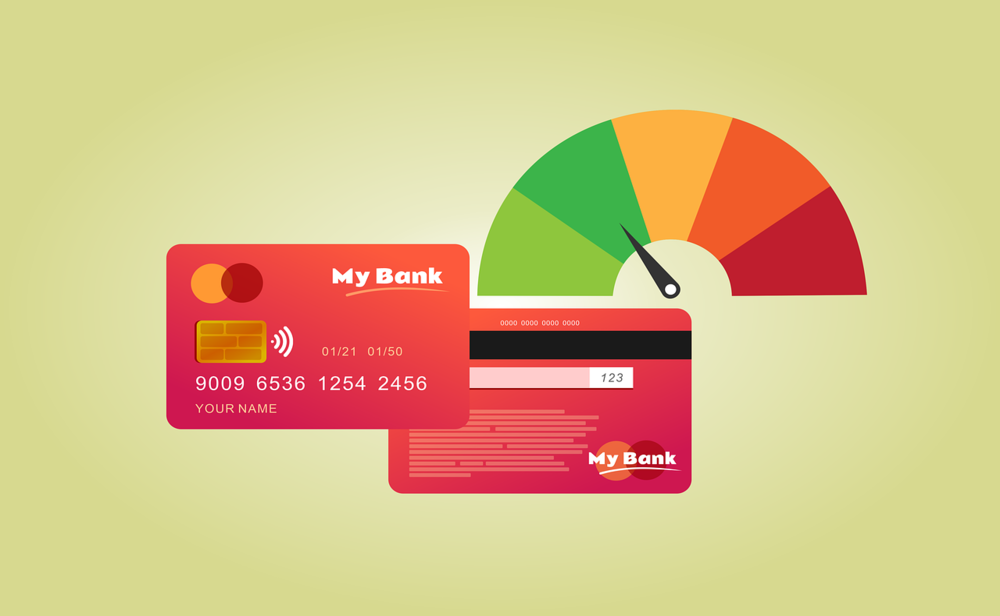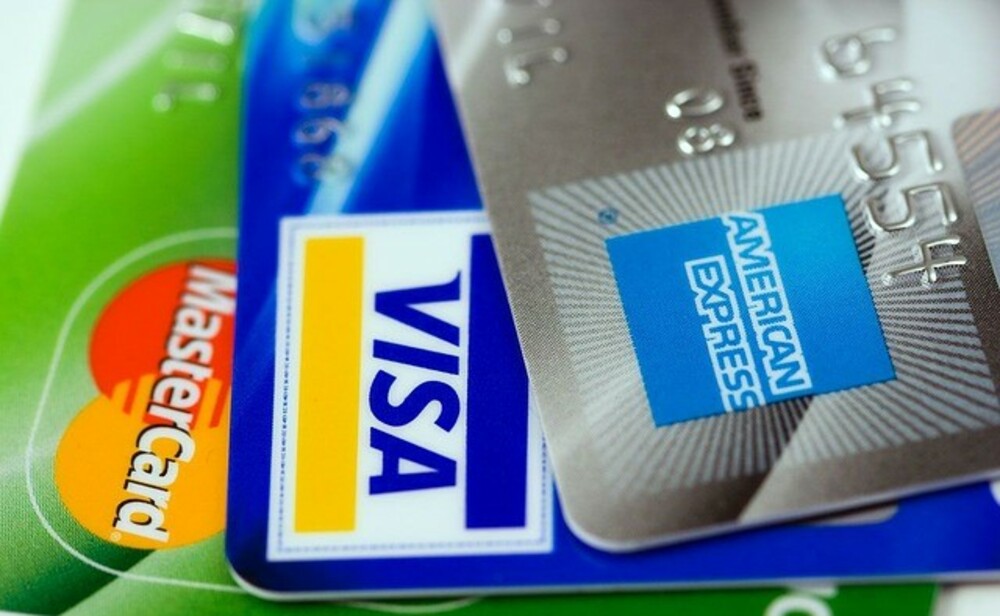What Is a Balance Transfer, and Should I Do One?
There’s no doubt about it: We’re living in a time when paying for things with plastic makes far more sense than it did even just a few years ago. Whether you’re planning to buy a new vehicle or take a vacation, there are many ways you can save money. One that might not be obvious is through balance transfer. Here’s what you need to know.

What Is a Balance Transfer?
Balance transfers give you the opportunity to reduce your interest rate or to get out of a short-term loan early. They’re great if you want to move debt and get out of an unfavorable short-term loan, or if you want to take advantage of a longer-term zero percent APR offer that you might not be able to get if you carry a balance.
Think of a balance transfer as transferring some of your debt to a new credit card company, such as your existing credit card company’s new credit card. The new card company takes your existing credit card debt as well as any new credit cards you open, and they exchange it for a new card with an interest rate that’s zero percent for the life of the balance, but it could be less if the credit card company sees that you’re going to be a responsible cardholder.
It’s important to keep in mind that you’re not going to be getting a 0 percent interest rate on your new credit card account for a very long time. Most of the balance transfer cards offer only a 0 percent APR for a few months, with annual percentage rates that go up to about 16 percent or so. In most cases, you’ll be getting 0 percent APR for 18 months, then you’ll have to start paying the APR instead of the interest rate.
In the end, the overall effect of the balance transfer is that you’re shifting the terms of the debt and the payment, so that you’re not incurring any new interest charges. But what if you already have several credit cards and a revolving line of credit? What if you’re carrying a balance on those cards that you can’t pay off and you want to make a change?
What Can I Do to Balance Transfer My Debt?
If you’re in a financial bind, you should make a serious effort to pay off your debt. Your credit score will go up and you’ll feel better, too. However, you’ll have to face some harsh realities: If you owe a lot of money on your credit cards, you’re going to have to pay it down.
One option is to try a balance transfers. The goal of the balance transfer is to avoid the penalties or interest charges that would result from getting a traditional loan with a higher interest rate. If you are diligent in paying the minimum due on your credit cards, you may be able to pay them off in full and get out of the interest-charging debt, while still keeping your existing credit cards. So, if you go this route, you’re not only avoiding interest charges, but you’re also getting rid of the card you really don’t want.
If you have more than one credit card, you’ll want to be very strategic about your transfers. The temptation is to pay off the smallest balance first. That’s tempting, but the problem is that the next month’s minimum balance will be the highest amount you owe, and the balance transfer charge will be applied to that amount, so the minimum balance will have to be higher than it otherwise would be.
Instead, be sure to pay off all the other balances as quickly as possible. Here are some suggestions for paying off the debts:
- Choose one card to pay off first. This can be a great strategy, because the rewards and benefits of that card might allow you to pay off the balance more quickly than other cards you have.
- Use online calculators. You can find many such calculators online. They’ll show you the interest rate and all the other balance-transfer fees you might be charged. They’ll also help you figure out how long it will take to pay off your balances. You may need to apply a little extra effort in some cases.
- If you have multiple credit cards, it’s always helpful to do at least a little research. There’s nothing wrong with getting a balance transfer card if you qualify for one. Just make sure you do your research and pay off your balances as quickly as you can. You’ll definitely be feeling better if you have that debt out of the way.
Keeping Up on Credit Card Rewards
If you have a lot of credit card debt, it’s very easy to lose sight of the rewards you’ve been earning by using the cards. That’s why it’s very important to review your credit card bills periodically and make sure that the rewards you’ve earned are still there. There are several ways you can review your rewards. You can get free annual credit card reports from the three credit bureaus. You should also check your statements periodically to see if you’re receiving rewards that you’re entitled to.
It’s not difficult to do this. Just take a look at your statements as often as you can. Some credit cards have credit card applications available. If the rewards you’re receiving are listed on those applications, you can sign up for the application or request an increase in the amount of credit that’s available. If you’re not seeing the rewards, you should be seeing, it may be time to talk to your credit card company.
Why Balance Transfer Credit Cards?
Balance transfer credit cards are one of the most popular ways to pay for things. A balance transfer, which is available from most major credit card issuers, allows you to pay off a balance of an older credit card or debit card in full. Typically, this can take more than one year to complete. This is an incredibly lucrative card that many people are hesitant to take advantage of. On the surface, this seems like an incredible deal: You get a short period of time to pay off your balance, and the interest-free period lasts long enough that you could easily get out of debt before the card has a substantial interest rate.
For example, if you’re paying 20% interest on a credit card balance, and the balance transfer period is 30 months, you’ll end up paying only 12.5% interest. Furthermore, a balance transfer card is going to let you enjoy the favorable terms of interest-free periods that a non-balance transfer card offers, as well. While this may sound like a great deal, a balance transfer card doesn’t come without pitfalls. Many people assume that a balance transfer card has low fees associated with it.
This is true for most of them; however, there are exceptions. The average balance transfer fee is around 3% of the amount transferred. Other fees, such as those for a balance transfer fee waiver and change fees, can be even higher. In other words, it can end up costing you far more to transfer a small amount than it would to pay that same amount in interest with a traditional card. Because of this, there are instances where you want to avoid a balance transfer card altogether.
Sign Up for a Balance Transfer Card
To start the process of transferring a credit card balance, you can either visit a reputable financial institution and apply for a balance transfer card, or you can call and get a no-obligation credit card offer. Once you’ve applied for a balance transfer card, you have several options. The most popular one is called an installment plan. It typically involves agreeing to make regular payments for a predetermined period of time, which may be 1, 3, or 7 years.
A second popular option is an accelerated pay-down plan. Here, you’ll agree to make a set number of payments over the course of a short period of time. Finally, you can apply for a balance transfer card with a longer-term. This would involve paying off your card in full, or making a certain percentage of your payment in advance to allow for the remaining payment to be made in full within a specific time frame.
It’s important to keep in mind that these options all have several different monthly fees. It’s possible that you’ll need to pay an upfront balance transfer fee in order to apply for the card. Also possible to pay a balance transfer fee as a balance transfer would resolve, and it’s also possible to pay fees for the installment plan and accelerated pay down plans. In any case, you should make sure you pay the balance transfer fee upfront, because it will likely be higher than the interest-related fee you’d pay if you didn’t.
However, the one downside to a balance transfer is that you can only transfer a certain amount of your debt. You can’t combine balances, meaning that if you have a credit card balance that’s more than you can handle on your current card, you can’t transfer it to a balance transfer card. Fortunately, there are several credit cards companies that offer balance transfer cards, and some of them offer a single card with no annual fee. This is a great option if you don’t want to pay an annual fee for the privilege of transferring a balance.
What Factors to Consider When Choosing a Balance Transfer Credit Card?
There are a lot of factors to consider when choosing a balance transfer credit card. Not all card companies offer balance transfer cards, so make sure you ask if you can be contacted about one if you don’t see one in your benefits options. Another important consideration is creditworthiness. If your credit score is average or slightly below average, you’re probably going to be fine using a standard credit card.
However, if your credit score is low, or if you’ve ever had any financial problems in the past, a balance transfer card may not be the best option for you. If you’re seeking to transfer a credit card balance to a credit card with a lower interest rate, it’s a good idea to apply for a credit card that won’t charge you fees when you transfer a balance, because that will lower your interest payments.
Conclusion
The balance transfer is a great way to remove high interest balances from your credit card. It’s possible that you’ll be able to pay off your credit card balance in full, which will save you money. However, you’ll need to calculate your costs of paying a balance down before making a decision. Consider all of the cards you have, and what type of rewards you’ll get if you transfer the balance to a low-interest credit card.
Also make sure the balance transfer would not negatively affect your credit score. Using a balance transfer card can save you from paying high interest on your debts. At the same time, they’ll also save you the interest cost for the amount of time you spend paying off the debt. As with any financial decision, you’ll need to make sure you’re looking at your options carefully and choosing the best one for you. Putting this advice into action will not only save you money, but it will make it easier to establish credit.
Having a credit score means you’re likely to get a lower interest rate on a credit card, and this will make it easier to get the credit you want. Debt management can be a complex process, so don’t be afraid to ask for help if you need it. Talk to your parents, a mentor, or a financial professional if you need some advice on this issue. Of course, there are always better ways to handle your debt than to take a card and run.
Must Read: How to Apply for Credit Card So You’ll Get Approved





